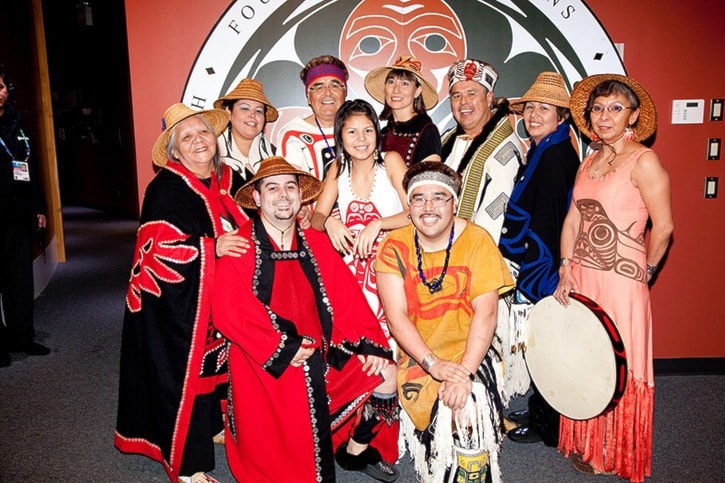It’s hard now to imagine a time – as high profile as First Nations painting, carving, music and dance is on the Canadian scene today – when it was virtually an underground culture.
But that was very much a fact of life after Canada’s Indian Act came into effect in 1876, according to the internationally respected contemporary artist Robert Davidson, Haida master carver, print-maker, painter and jeweller, whose home base and studio is on the Semiahmoo First Nation lands in South Surrey.
Under the provisions of the Act, First Nations culture – particularly celebratory ceremonial culture such as feasts, potlatches and pole raisings, and traditional songs and dances – all but disappeared.
“We were muted – our ceremonial songs and dances were not allowed to be performed in public,” Davidson said.
Even when a ban on such events was lifted in 1954, a close to 80-year gap in cultural development and mentoring seemed to have virtually obliterated the traditions.
It’s a very different situation today, says Davidson, who is a founder-member, with his brother, Haida carver, painter and print maker Reg Davidson, of the Rainbow Creek Dancers performance group.
This week the 10-12 member group plays an integral part in the sixth annual Coastal First Nations Dance Festival, running until March 10 at the UBC Museum of Anthropology in Vancouver.
It’s the second, and by far the most prominent, featuring of the group at the festival, which is presented by the Gitxan professional troupe Dancers of Damelahamid, from north west B.C.
First formed by the brothers in 1980, the group is named for a creek that runs behind their home village of Massett, Haida Gwaii.
They chose the name because the creek runs only in the winter, traditionally the time for ceremonies calling for dance and song.
Davidson said he and his brother have established a pool of performers whom they can draw on for a specific event, depending on where the venue will be. Both brothers have a hand in designing costumes, colourful print capes, masks and ceremonial objects.
Rather than simply recreating performances of the past, the group typifies a revitalized process of evolution among First Nations performance groups.
“The exciting part is creating new songs and dances within the tradition,” Davidson said.
Biggest compliment, he added, is when he hears an elder say, as he did after the debut of a Salmon Dance in Massett in in 1989, “I haven’t seen that done in a long time.”
“It’s almost as if we’ve tapped into a cosmic memory.”
Davidson said he and his brother have built their songs and dances on pieces passed down to them by their grandmother, Florence Edenshaw Davidson, and other elders.
“My grandmother was very patient in teaching the songs to us,” he said. “She taught us as much as she knew.”
Haida culture didn’t die out, he said, because, contrary to appearances and statutes, it never entirely stopped.
By the late 1960s, when Davidson’s generation reached adulthood, there was a sense that it was time for Haida culture to reemerge in the public eye.
The genesis of the Rainbow Creek Dancers really came at that time, Davidson recalled.
Although he was born in 1946, it wasn’t until he was 16 that he first heard his grandparents singing a Haida song, Davidson said.
“It was ‘wow!’ – a whole new dimension of what I could be,” he said.
“At that time it was shameful to be Native. I don’t say it accusingly – it’s part of history and what things were like.
“I feel it’s up to me to move beyond it now, and I’m willing to do whatever is needed so we can be on the other side of the trauma.”
For more information on performances and tickets for the Coastal First Nations Dance Festival, visit www.moa.ubc.ca/eventtickets or Damelahamid.ca
